Use Side Pressure To Avoid Breaking Off On Snags
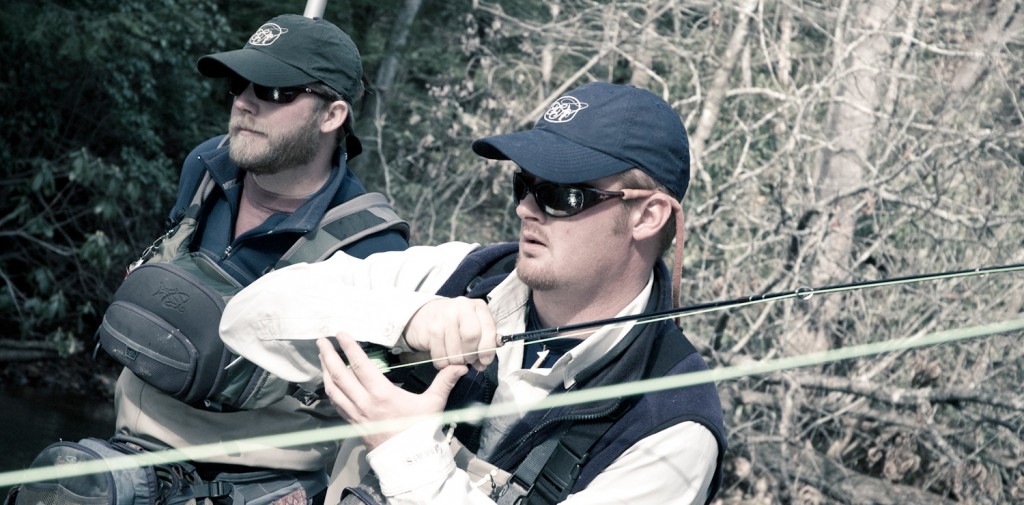
You’ve got a big fish on and it’s making a screaming run straight for a big snag on the far bank. What should you do to decrease your chances of breaking off?
Your best bet is to apply low side pressure with your rod while keeping a perpendicular position between you and the fish at all times. Doing so you can put twice as much pressure on the fish than you normally can when your fly rod is in the overhead fighting position. Secondly, it’s much easier for you to steer the fish’s head and turn its direction using low side pressure. Always follow the fish up and down the river during the fight. The closer you stay to the fish the more leverage and power you can apply to steer and control the fish. Lastly, don’t tighten down on the fish trying to stop its run towards a snag, because nine times out of ten you’ll end up breaking the fish off. The harder you pull on a big fish the harder it generally going to pull back. If you find playing the fish aggressively makes the fish fight harder
Read More »Take the Time to Research Your Boat Ramps
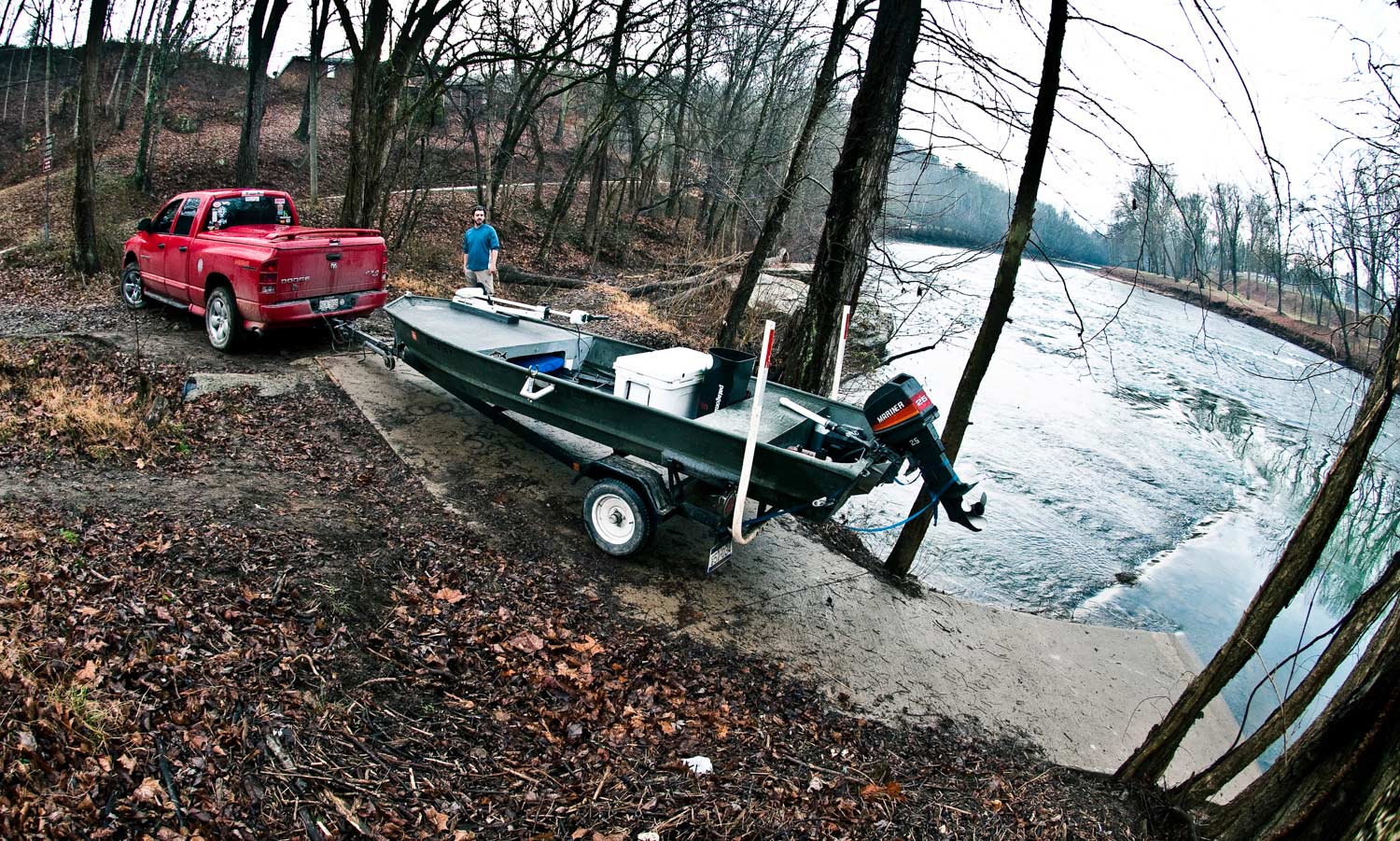
It’s really easy to get excited about a last minute trip when your buddy calls and says the fish are biting, and then not take the time to research the logistics of where you’re going to be fishing. Much of the time things work out in the end when we’re doing what we love, but every now and then, no matter how hard you try to make things right, you’re bound to get screwed. That was the case for us during our final day of our recent musky trip with our good friend Charlie Murphy in West Virginia. Due to poor water conditions, we had to go with a Plan B and change our fishing location the final day of our trip. Charlie had taken a friends word that we could launch our boat at the designated spot with no problem. Unfortunately, his acquaintance thought we were launching a drift boat, not a john boat, and that turned out to be and impossible task, without the aid of a cheap pvc roller and a 20 foot section of rope. Now, I’m known for being able to back up a truck and trailer with the best of them and until this day, I was batting a 1000%. So much for my perfect batting average of backing up, because this midget boat ramp put it to me. I tried like hell, but it just wouldn’t fit.
If we would have had the time in our plans to drive by and look at the boat ramp prior to our fishing we could have saved a wasted trip by getting the equipment needed or headed back to our first spot where the musky fishing was super hot. We had nailed them the first couple days but the musky weren’t monsters. Let me give some advice to those that are willing to take it.
Read More »Summer’s Over
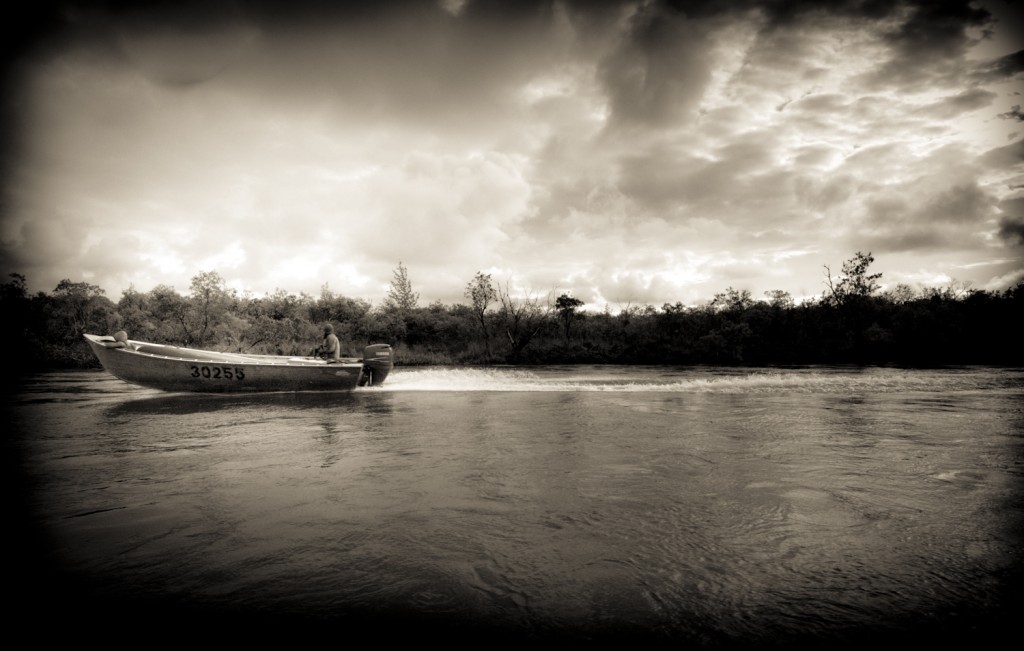
HERE’S ONE IMAGE AND AND A BRIEF STORY FROM AN ESSAY I DID FOR HATCH MAGAZINE.
TO SEE THE REST OF THE IMAGES VISIT HATCH. YOU’LL BE GLAD YOU DID.
In August of 2010, at he end of a hectic and exhausting summer, I found myself in western Alaska for a week at the Alaska West Lodge. Frankly I was a little burned out. The weather, which can be a formidable challenge in Alaska, complicated my travel arrangements. From Anchorage I was still two bush planes a bus and a boat ride from the camp which rest on an island in the Kanektok river. I fully expected to be spent by the time I got there. I found quite the opposite. By the time I reached the camp I was recharged with excitement by the place. Western Alaska is quietly beautiful. The travel it’s self had been visceral. I recall flying low over deserted wetlands, looking down and identifying parts of an airplane on the ground below. I remember thinking, “yes, you are in the bush now”.
While the other guests were unpacking, having a snack or smoking a cigar, I was getting into my waders and lining up my rod. I just couldn’t wait to see what this place had in store for me. I waded into the Kanektok and within a few cast my indicator disappeared and I was tight to a big rainbow. There I was in heavy water with no net playing a big fish. Clearly, I had not thought this through. About that time a boat rounded the bend.
Read More »Reece’s Surface Assassin
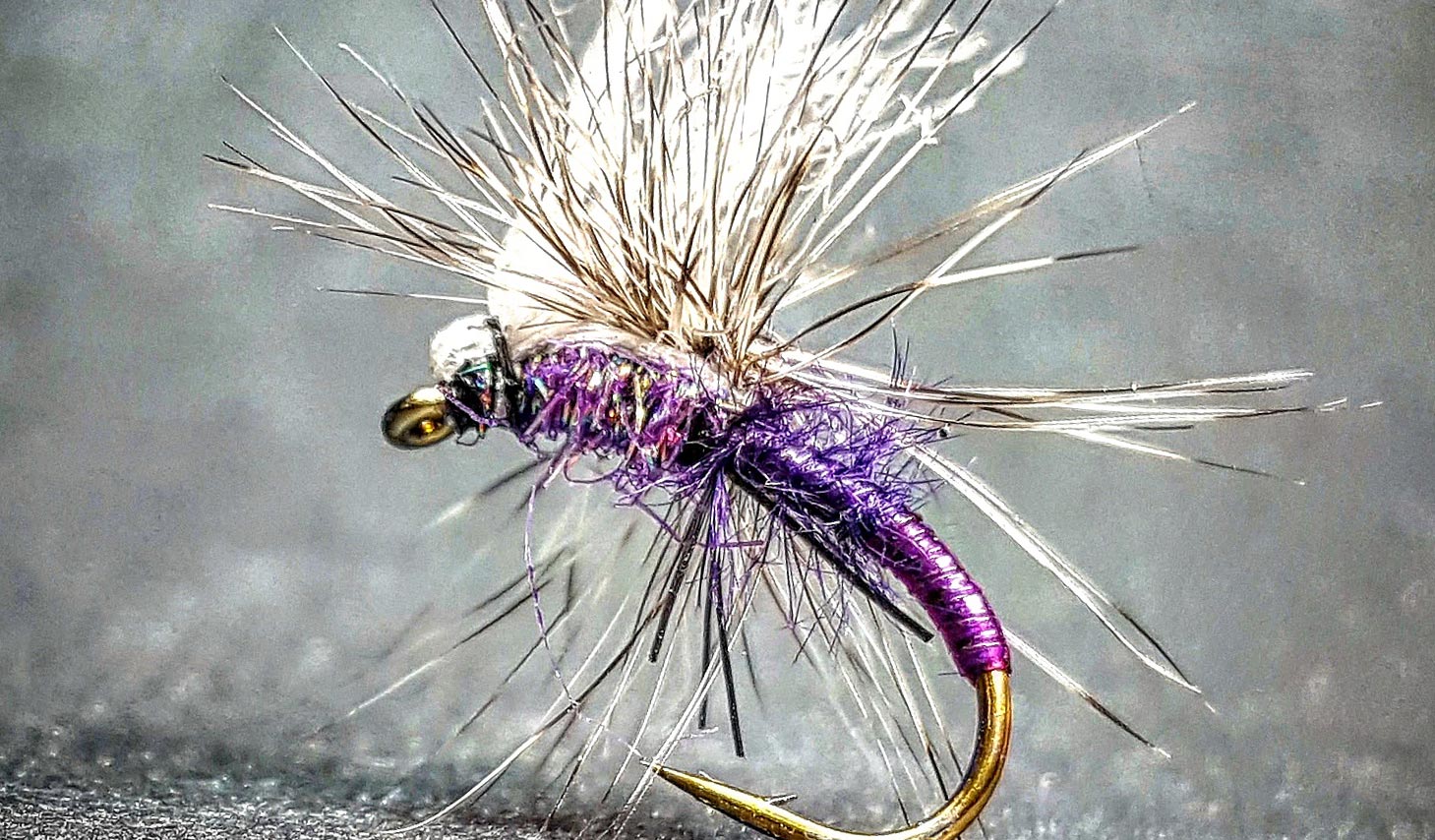
By Bob Reece
For many fly fishers there is nothing more enchanting that watching trout sip emerging insects from the water’s surface.
This allure can often lead to frustration without the proper pattern and presentation. While the fly fisher is responsible for presentation, Reece’s Surface Assassin is the appropriate pattern.
Both emerging mayflies and caddis flies display some common characteristics when viewed from below. A smooth shelled abdomen along with the husky remains of gills, legs and antennae dangle below the surface film. Simultaneously the glistening exoskeleton and compressed wings of the “new” insect emerge on the water’s surface. Reece’s Surface Assassin, in its wide array of colors, effectively displays this combination of traits to feeding trout.
When fishing this pattern I typically use it as a solo dry. However, in heavy emergences I do rig two Assassins as double dries. I always connect them eye to eye using a non-slip mono loop knot to attach each fly. This allows
Read More »Wind in Saltwater is Your Friend Not Your Enemy
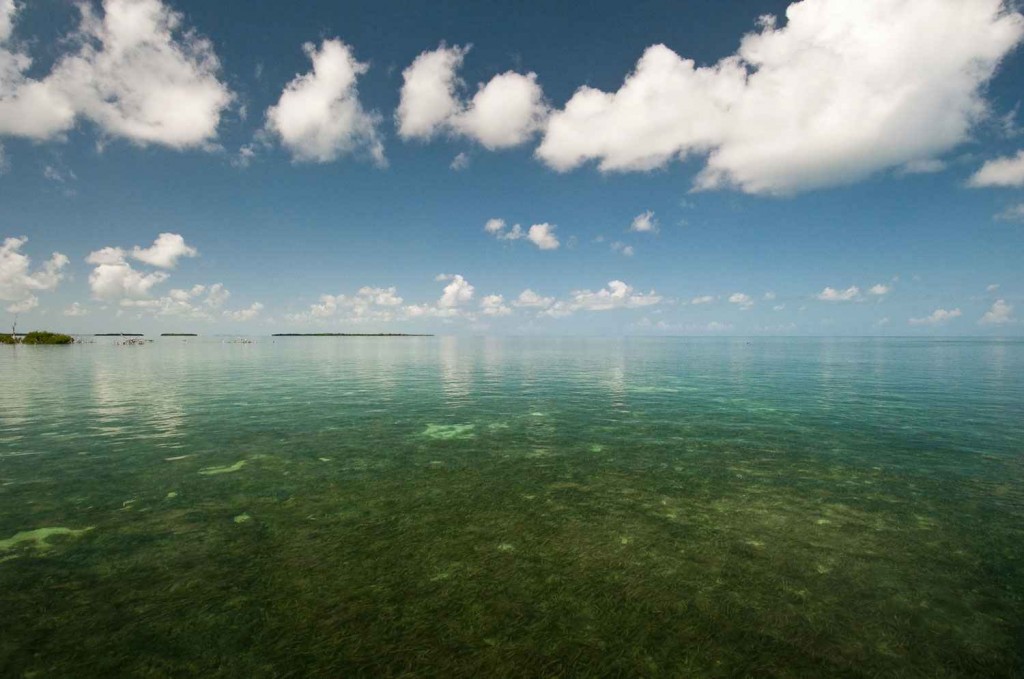
Its 6:30am in the morning when we arrive at the boat launch in Big Pine Key, FL.
Within minutes of stepping out of the car the stagnant humid air begins to suffocate my body. The North Georgia mountain weather that I’ve grown so accustomed to, feels like air conditioning compared to this, and my body is still in shock from the drastic climate change. As I walk down to the boat ramp to help unload the boat, I feel the first drops of sweat rolling down my back. I think to myself, are you freaking kidding me? The sun isn’t even up yet. There’s absolutely zero breeze this morning, so calm you could spot a fish rolling on the surface three hundred yards away. My eyes seem confused at what their witnessing. If you had blindfolded me, and taken me here, there’s a good chance I’d guess I was on a freshwater reservoir. Call me crazy, but I was under the impression there’s always supposed to be at least some wind in the saltwater. I’d know better, but I’ve spent very little time in the Florida Keys during the late summer. Apparently, it’s quite common to go days without any wind during the months of July, August, and September. Awww, it makes total sense why I saw all those sailboats anchored up now.
You always overhear fly fishermen complaining about too much wind on the saltwater flats, but you rarely hear fly fisherman begging for it. To much or too little of either can spoil your fly fishing on the saltwater flats, making fishing conditions extremely tough. Believe it or not, wind is your friend and can at times, be an asset for fly fishermen. For starters,
Read More »Does Casting Technique Matter For Small Stream Trout Fishing?
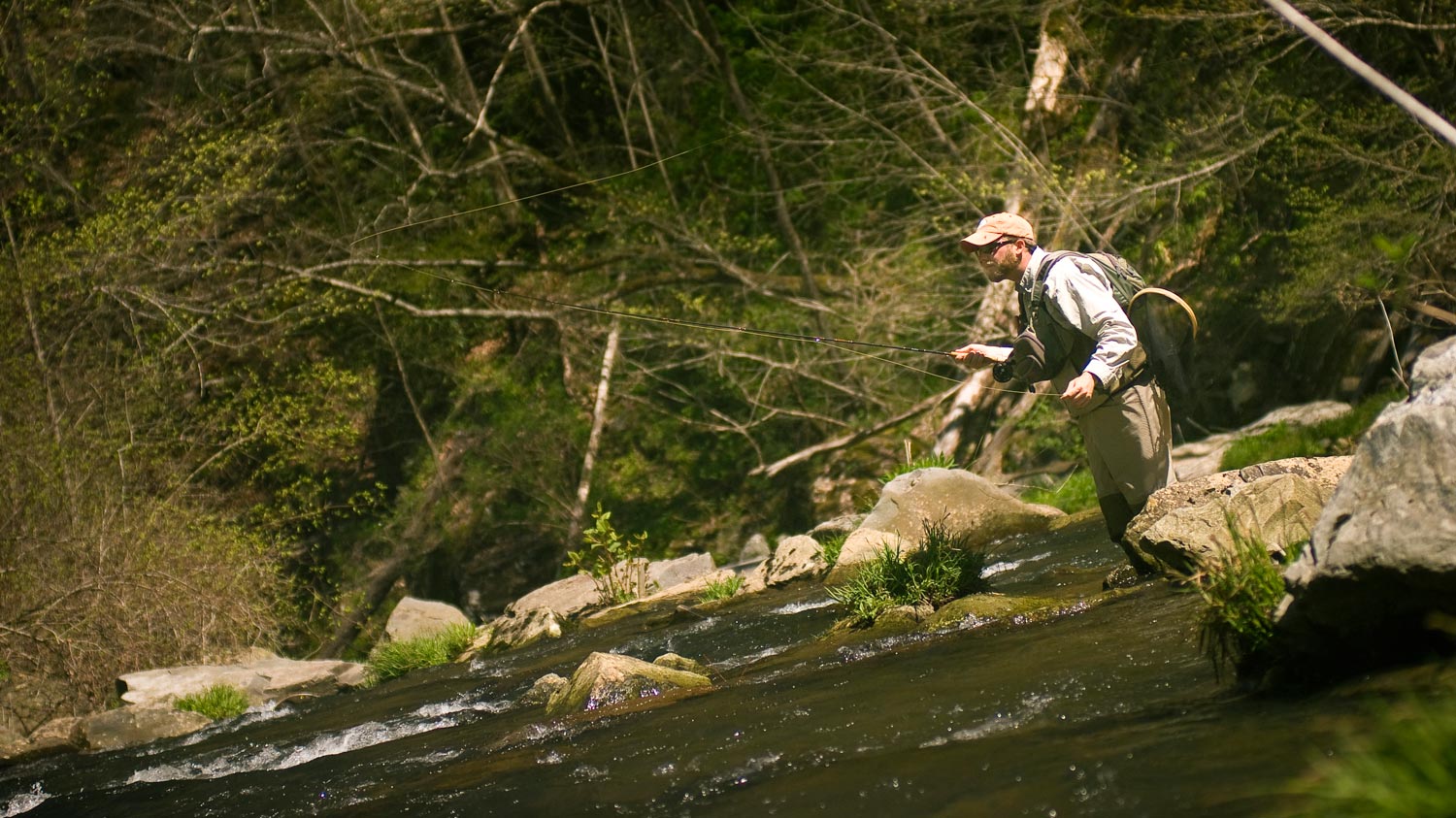
By Louis Cahill
You can sure catch a lot of trout with no more than ten feet of fly line, but does that mean that casting doesn’t matter?
I had this conversation recently. I was fishing a classic, pocket water stream with a friend and at some point he asked me point blank why I was catching fish and he wasn’t. He was shocked when I told him the problem was with his cast. Neither of us had more than ten feet of line out of the tip of our rod.
It’s a problem that plenty of beginning, and even intermediate anglers have. Even with a very short line, poor casts make for poor presentations. the problem is compounded in tight quarters where your first presentation really needs to be your best. Flailing about in close proximity to fish is generally not productive.
One of the most common casting mistakes I see anglers make, when casting a short line, is using too long a stroke. Often, anglers will do this because they are struggling to load the rod. With the head of the line still on the reel, it’s impossible to load the whole rod like you would in a longer cast. The problem very quickly becomes one of line management. The long, and usually circular, casting stroke dumps the fly line on the water, making it nearly impossible to get a good drift. Especially in the conflicting current of fast pocket water.
Fixing this problem is super simple, and comes down to
Read More »A Flybrary for Anthony
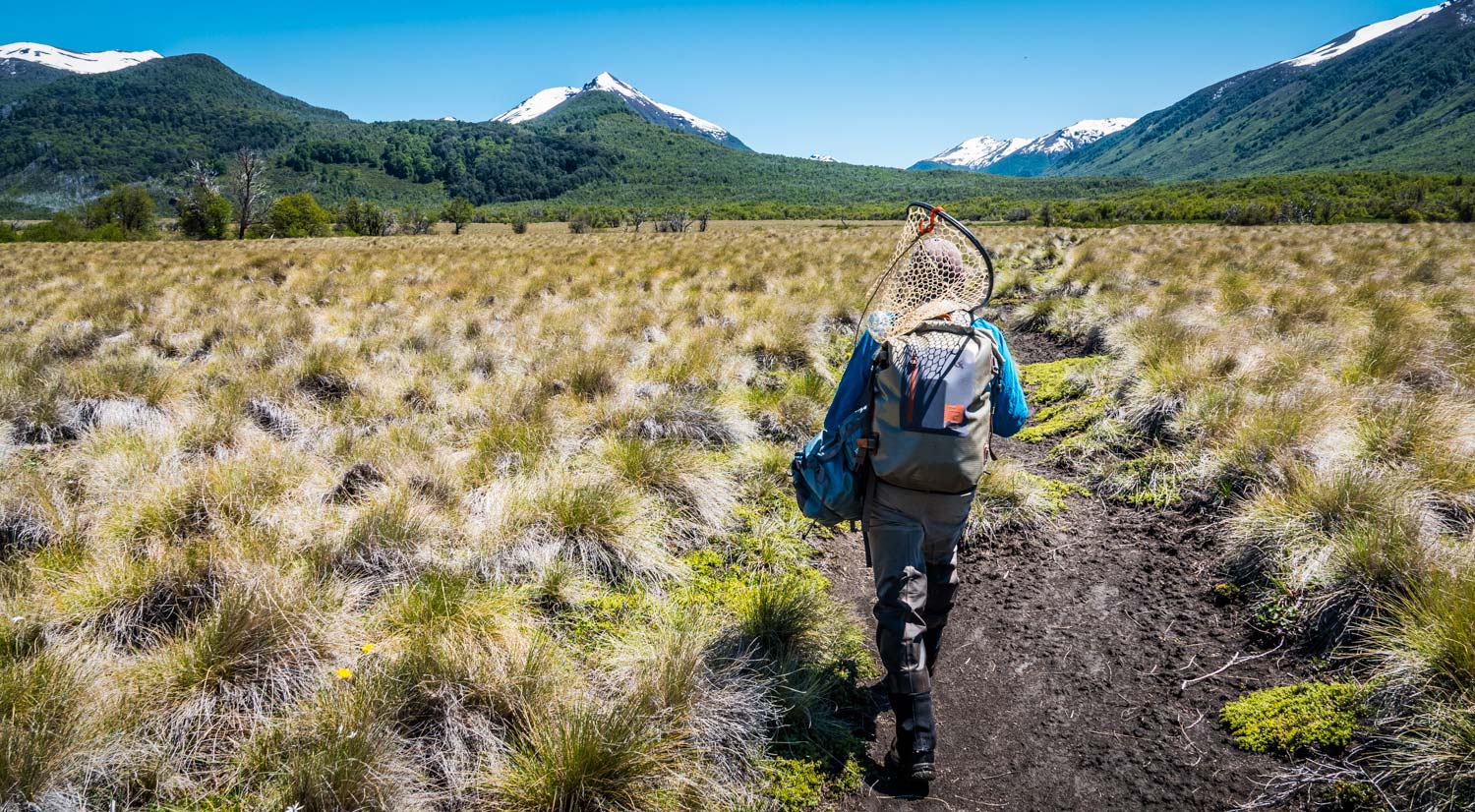
By Mark Greer,
WHEN MY SON, ANTHONY, SUDDENLY DIED IN MARCH 2011 IT WAS BEYOND DEVASTATING.
His loss was the most excruciating pain that I’ve experienced during my life time. Anth was a talented fly fisherman and a Green River Outfitters Guides Association (GROGA) certified guide on the famed Green River below Flaming Gorge Reservoir. He was a college student, he tied his own flies, and he fished every waking moment that he could. He was also the kind of angler that would walk up to another angler on the water, strike up a conversation, offer them a secret tip for that specific spot, and then leave them with a couple of flies which he’d been successful with that day. He was also a fly-fishing evangelist, as everyone that expressed an interest in fly-fishing, Anth would take them out with him – teach them to cast, and give them the needed gear to get them started and off on the right foot.
In an effort to cope with the loss of my son, I did two things. I kept a journal where I’d write my thoughts and what I was struggling with, and I started a (picture) scrapbook of all his fishing adventures. I also decided during that first year of his passing that I’d do a special remembrance project for each year for 10-years. These projects, along with the journal and scrapbook, became my makeshift-therapy for dealing with my son’s death. Here’s a list of those projects.
Read More »Kiss the Bank with Your Terrestrials
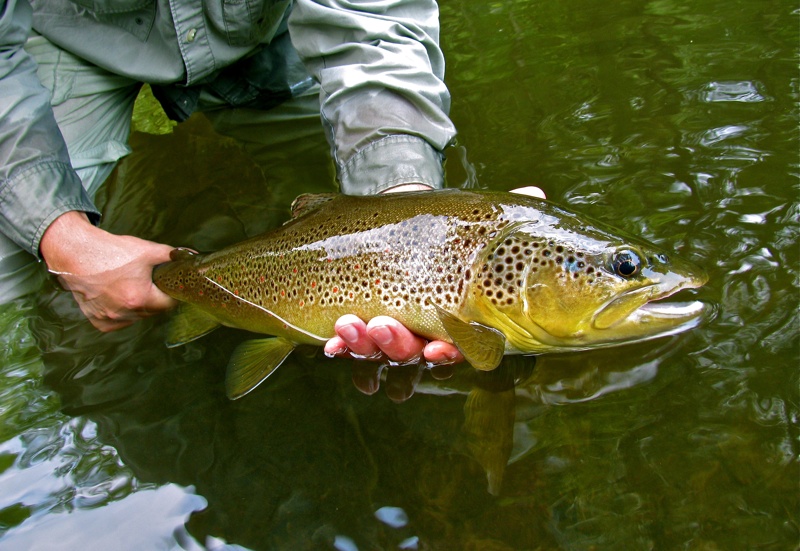
One of the best times of the year to catch big brown trout is during the summer months.
When the terrestrial bite is in full swing, brown trout will often tuck up under overhanging foliage super tight to the banks. Often they’ll be in less than a foot of water waiting patiently for the land born insects to fall to the water for an easy meal. Targeting this habitat on the water will increase your brown trout catch ratio over rainbow trout. Although rainbow trout will utilize overhanging foliage, they still prefer foam lines with current and deeper water for the most part.
Target Overhanging Foliage
This beast above devoured a beetle pattern that was placed perfectly in the strike zone. Kiss the banks with your terrestrials targeting undercut banks and overhanging foliage, and you could land a trophy like this. Just because they’re isn’t current doesn’t mean it won’t hold a good trout. The main factor is
Stocked Brook Trout – Strip it, Skate it, Swing it
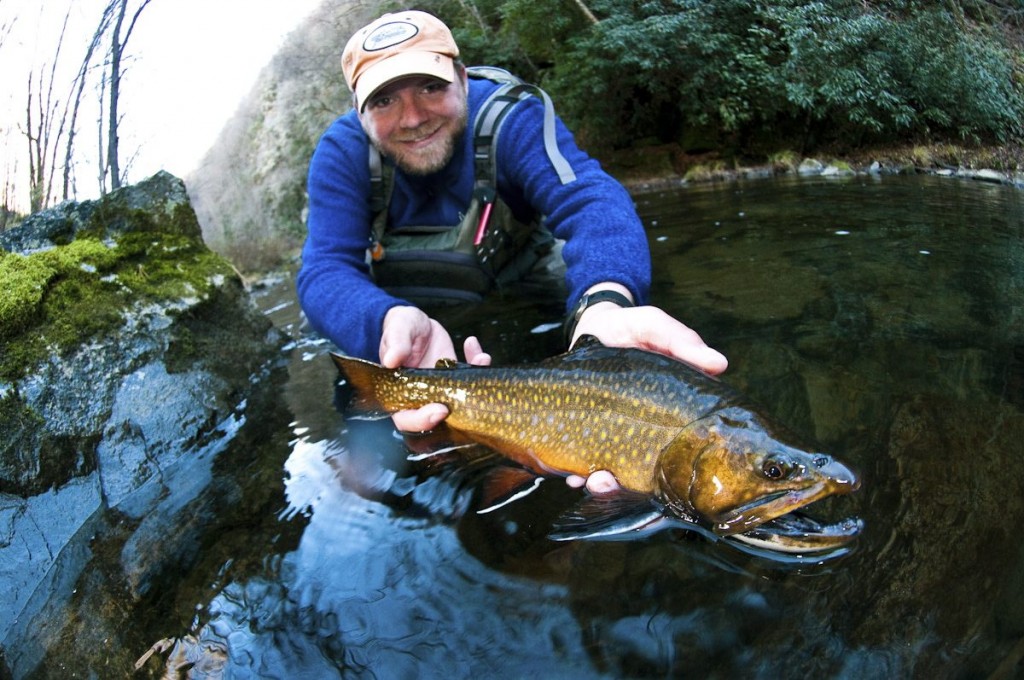
I’M VERY FORTUNATE TO HAVE A GREAT TROUT STREAM NEAR BY THAT OPERATES A DELAYED HARVEST PROGRAM (CATCH AND RELEASE FISHING BY ARTIFICIAL FLIES ONLY) THAT STARTS IN THE FALL EVERY YEAR, AND RUNS INTO THE EARLY SUMMER.
I love visiting this trout stream because the DNR stocks big male and female brook trout, some of which, can push well over twenty inches. To consistently catch these beautiful brookies, I usually have to experiment with different types of flies and presentation methods to find out what’s the best option for the day’s fishing. Sometimes all I need is a simple drag free drift with a dry fly or nymph to catch them. Other times, the brook trout will completely ignore my dead drifted flies and I’m forced to impart extra action and movement on my flies to trigger bites. When I can’t get stocked brook trout to rise to my dry fly or take my nymphs dead drifted, I’ll then try fishing tactics like stripping a streamer, skating a dry fly or swinging a tandem nymph rig. For some reason, the added action and movement, often will trigger reaction strikes from stocked brook trout that have lock jaw. Moving your fly upstream, and causing it to make a wake, be it a dry fly or wet fly is another technique that can work wonders. Everyday can be different, so it’s important that you figure out what kind of presentation and type of fly the brook trout want to help you find success. Now that I’ve gone over how movement can trigger bites with the stocked brook trout, let’s talk about each in a little more detail.
TECHNIQUE #1 – TRY STRIPPING STREAMERS WHERE THE BROOKIES ARE LOCATED
I’ll never forget a day on the water with my good friend Joel Dickey several years ago, where he landed two brook trout well over 22 inches with a streamer. They were the biggest stocked brook trout I had ever laid my eyes on in the Southeast, and the only thing that proved effective for catching them that day, was retrieving a streamer across their noses erratically. Try fishing brightly colored streamers that incorporate flash for stocked brook trout. Multi-colored streamer patterns with yellow, orange and blue have served me well over the years. Take an attractor approach when tying or purchasing your streamers, you don’t need to fish natural looking streamers that resemble the local sculpins, crayfish or baitfish. These can work also, but I’ve found streamers that are colored loudly get the most attention. Your streamers don’t need to be very big either. A two to three-inch streamer is all you need to get the job done. Just keep in mind that the brook trout will not always be fooled by your streamers. I provided this technique first, because right after brook trout are stocked, they usually are suckers for streamers. After being caught with them a few times though, they start to wise up, and will chase but not always eat streamers. Try streamers where you can locate brook trout or know it’s good water for brook trout (usually slow moving runs or tails of pools), and if you don’t have any luck, be ready to try other types of flies and techniques.
TECHNIQUE #2 – TRY SKATING A BIG ATTRACTOR DRY FLY
Skating big dry flies across the surface of the water can be highly effective for stocked brook trout. I like to fish large dry flies that float well and have enough bulk that they’ll create a nice V-wake when I’m skating and twitching them. A bright foam body with rubber legs, stacked deer hair and a palmered grizzly hackle feather works well. If you don’t tie flies, a
Read More »Flood Tide Redfish

By Owen Plair
I ALWAYS TELL MY CLIENTS THAT THE FLOOD TIDES ARE A GIFT, TO ANGLERS, FROM MOTHER NATURE.
Targeting tailing redfish on flood tides, from Northern Florida all the way to North Carolina, is one of the most unique opportunities for fly anglers. Something about seeing a tail slowly cut through the top of the water column, surrounded by short spartina grass, on a flat that is only covered by water a few times a month is simply special. Watching these fish casually tail their way through the flat, digging their noses in the mud looking for fiddler crabs is almost as fun as watching them at the end of your fly line.
This is a simple and short explanation of this unique style of redfish and will be the introduction to more articles on flood tide redfishing, which will be more detailed on characteristics of flats, fishing, presentations, fly selection, and equipment.
What is a flood tide?
A flood tide is a larger than normal tide that pushes water onto short spartina grass flats, allowing redfish to feast on the thousands of fiddler crabs that live there. In areas where flood tides occur, there is a lot more tidal flow than most redfisheries in the US. For example, here in Beaufort our average tide is between 6-7 ft, but your flood tides would be 7.5-8.5 ft which pushes enough water on these short grass flats for the redfish to move in.
On average we get around 10-15 of these tides per month, depending on moon phases, and only fish the floods from the middle of March till the end of November, depending on weather patterns. Once the water temp gets below 65 the fiddlers go down and the redfish stop tailing. No food means no tails. Tide charts are your best friend when it comes to flood tides and I seem to find myself always looking forward to the next set of floods!
How do you fish a flood tide?
When fishing the flood you usually want to start around
Read More »